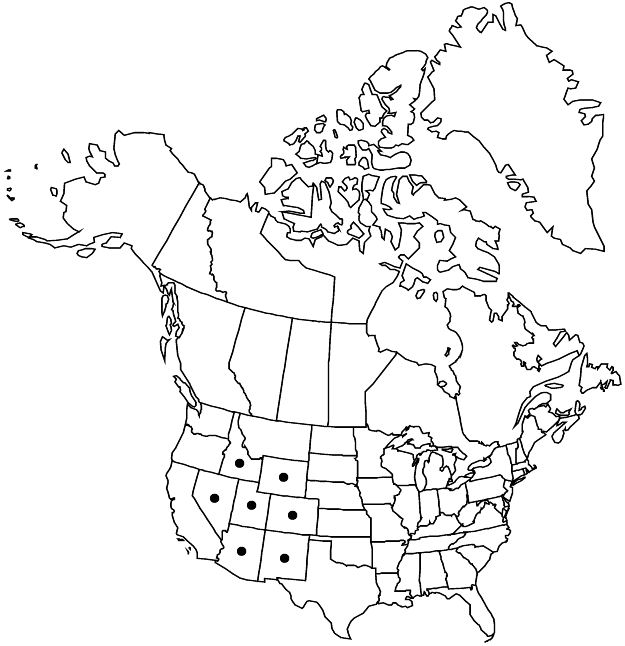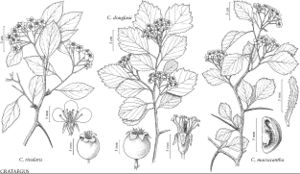Crataegus rivularis
in J. Torrey and A. Gray, Fl. N. Amer. 1: 464. 1840.
Shrubs or trees, 30–50 dm. Stems: twigs: new growth greenish, sparsely pubescent, early glabrescent, 1–2-years old often red-purple; bark on younger 2–5 cm thick branches dark gray-brown, sometimes copper-colored; thorns on twigs straight or ± recurved, 2-years old black or purple-black, glossy, fine, 1.5–4 cm. Leaves: petiole 1–2.5 cm, glabrous; blade elliptic to narrowly elliptic, 3–8 cm, length 2+ times width, thin, base cuneate, lobes 0 or small apiculi at ends of some vein tips, margins serrate, teeth numerous, usually acute, fine to coarse, venation semicamptodromous, veins 4 or 5 per side, larger often branched proximal to ends, apex acute, abaxial surface glabrous, adaxial appressed-strigose young. Inflorescences 6–12-flowered; branches glandular-punctate; bracteoles early caducous, usually present, margins sessile-glandular. Flowers 14–17 mm diam.; sepals broadly deltate, 6–8 mm, margins entire, apex narrow, glabrous; stamens 10, anthers pink, sometimes ivory; styles 3–5. Pomes deep red (mid Aug), black or blackish purple mature, suborbicular, 10 mm diam.; sepals ± erect to strongly outcurved or ± patent, 2–3 mm; pyrenes 3 or 4, sides eroded.
Phenology: Flowering mid May–early Jun; fruiting Aug–Sep.
Habitat: Intermontane streamsides, ditches, flood plains
Elevation: 1300–2300 m
Distribution

Ariz., Colo., Idaho, Nev., N.Mex., Utah, Wyo.
Discussion
Crataegus rivularis is most abundant in intermontane Colorado and Utah and is one of two hawthorns found in Arizona; it is rare in Nevada. There are reports from northwestern Texas (for example, D. S. Correll and M. C. Johnston 1970); they have not been verified. Crataegus rivularis is one of the more common woody species of mesic, valley bottom intermontane habitats. The species flowers early.
Crataegus rivularis is superficially similar to the more or less sympatric, less common, C. saligna; it has larger leaves with fewer veins, larger flowers with ten stamens, and larger pomes. It differs from C. erythropoda little other than in leaf shape and ripe fruit color.
Selected References
None.
